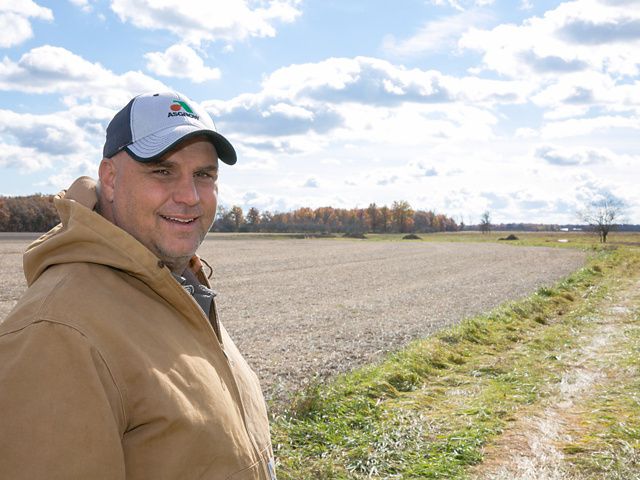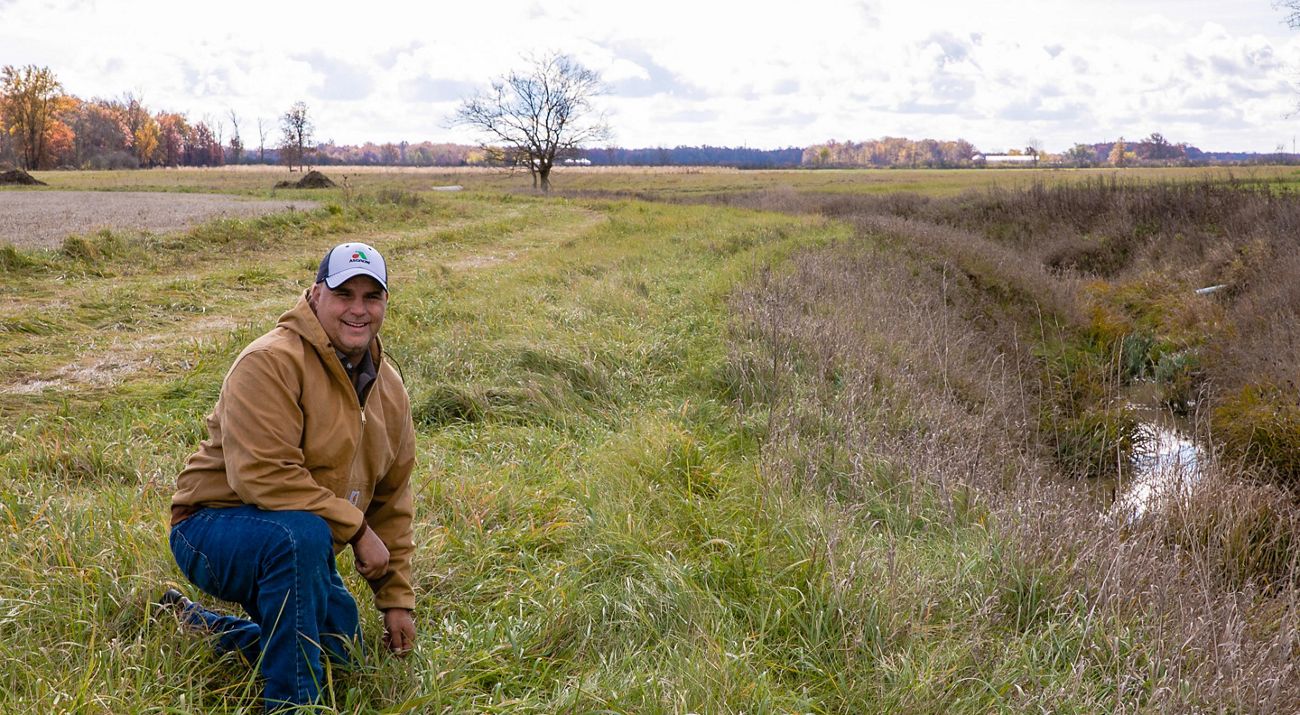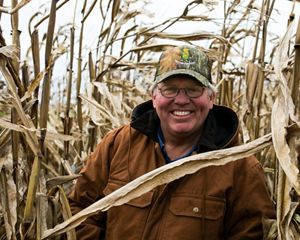Farmers at the Forefront of Soil Health
See how other farmers are building a sustainable future on their lands.
See Their StoriesBrian Nusbaum is always looking for the $100 bill on his farm in northwest Ohio. Years ago, a Texas rancher told him that the key to surviving tough times was knowing that “somewhere on the farm is a $100 bill. All you got to do is improve something and go get it.”
Those words stuck with Nusbaum, and today he implements conservation practices like no-till, cover crops and the 4Rs of nutrient stewardship—applying the right source of fertilizer at the right rate and the right time in the right place—to improve and maximize his business. As a result, the third-generation farmer says he sees “huge benefits” and “yield pops” on his 750-acre corn and soybean farm.
Soil Health Practices Pay Off
Now a county Farm Bureau president, Nusbaum didn’t enjoy tillage farming growing up. “Dad would have me out on the tractor driving all day. We worked the ground three times, and I thought, ‘This is just crazy.’”
Then in 1987, his father became one of the first in the area to switch to no-till, which is planting without plowing first. The practice saved his family “lots of trips over the field, machinery and fuel costs, and time.” Beyond the cost savings, Nusbaum says that no-till’s big benefit is reduced soil erosion.
Quote: Brian Nusbaum
I try to keep the water as clean as I can before it gets into a creek. . . . I want to leave our environment as good, if not better than, what I inherited.”
In 2012, Nusbaum got into cover crops. He sees terrific advantages, from yield increases to reduced input costs to improved soil health, and laughs that he once thought, “Why in the world would I want to plant a weed in the field when I’m trying to kill them?”
Nusbaum’s “aha” moment came during a ride in his neighbor’s combine. An early adopter of cover crops, the neighbor was harvesting his soybeans at a time when Nusbaum’s beans weren’t nearly ready. When Nusbaum hopped into the combine with his neighbor to traverse the soybean fields, he was stunned by just how productive his neighbor’s crop was.
Right then Nusbaum decided to experiment with cover crops, planting one-half of a 120-acre field with cereal rye that fall. At harvest time the next year, Nusbaum saw a four-bushel increase in his soybean yield. “I’m kind of a numbers guy, and I started thinking about it,” he says. “That’s 4 bushels. I earned $36 bucks for the beans, and it cost me less than $20 to put [the rye] out. Wait a minute, why aren’t I doing that?”
Additionally, his soil analyses showed higher organic matter in the field planted with rye. Cover crops have also helped nutrient cycling on his farm, meaning that the practice improved the soil’s ability to trap and retain nitrogen, making it more readily available for uptake by his cash crops.
Now, Nusbaum plants rye into additional fields each August. He thinks about venturing into other cover crops to keep his fields covered year-round to continue increasing their organic matter and reap other soil health benefits.
Using the rye has required him to change how he manages his soybean crop. Before, his family worried about the heavy clay soils crusting after rain and potentially cementing in the soybean seeds. Today he no longer worries about the soil crusting, because the rye root system adds structure to the soil. However, he now needs to compensate for the rye pulling moisture from the soil by planting the soybeans deeper into the ground. For that he bought bigger equipment.
He also doubled the space between his soybean rows, making it easier to plant his cover crop seeds between the soybeans, saving him up to $12,000 a year on seed costs. The cover crops have proven so beneficial to his soybeans, he’s been able to plant at a lower density and still get strong yields. The bigger planting equipment he bought is more precise, helping him cut back on the number of seeds he uses—and the cost of his seeds.

Nutrient Stewardship: Good for Farming and Our Waterways
Nusbaum contracts with a company that has earned certification through the 4R Nutrient Stewardship Certification Program to apply fertilizer to his fields. The company optimizes nutrient use through various practices, including using technology to map crop yields and calculate rates of fertilizer application based on soil conditions and yield. He also applies fertilizer to corn at planting time, and later beside the plant in a subsurface band to minimize overuse of nutrients.
Nusbaum also uses satellite technology that monitor spray application of fertilizer by zone and shuts off the applicator when it reaches a zone that’s already been sprayed.
Nusbaum recently improved his farm’s drainage system to prevent rainwater from washing large amounts of soil and nutrients, like phosphorus and nitrogen, into nearby waterways.
“I try to keep the water as clean as I can before it gets into a creek,” says Nusbaum.
Beyond the cost savings of all of his conservation practices, Nusbaum appreciates the environmental benefits. “I want to leave our environment as good, if not better than, what I inherited.”


